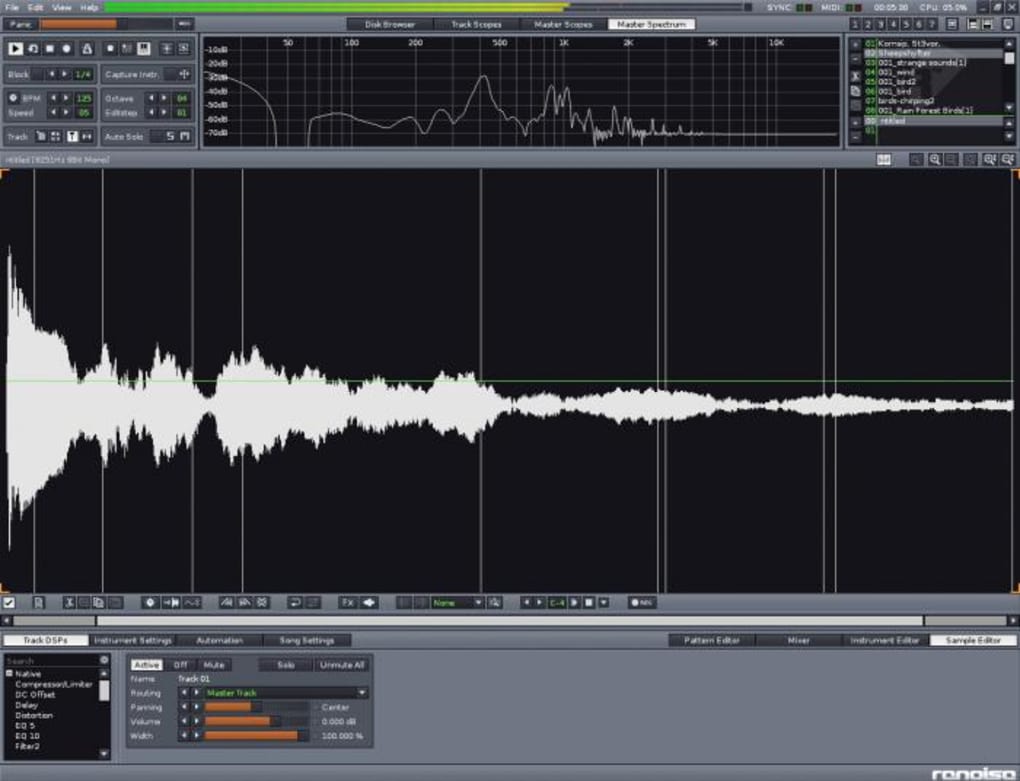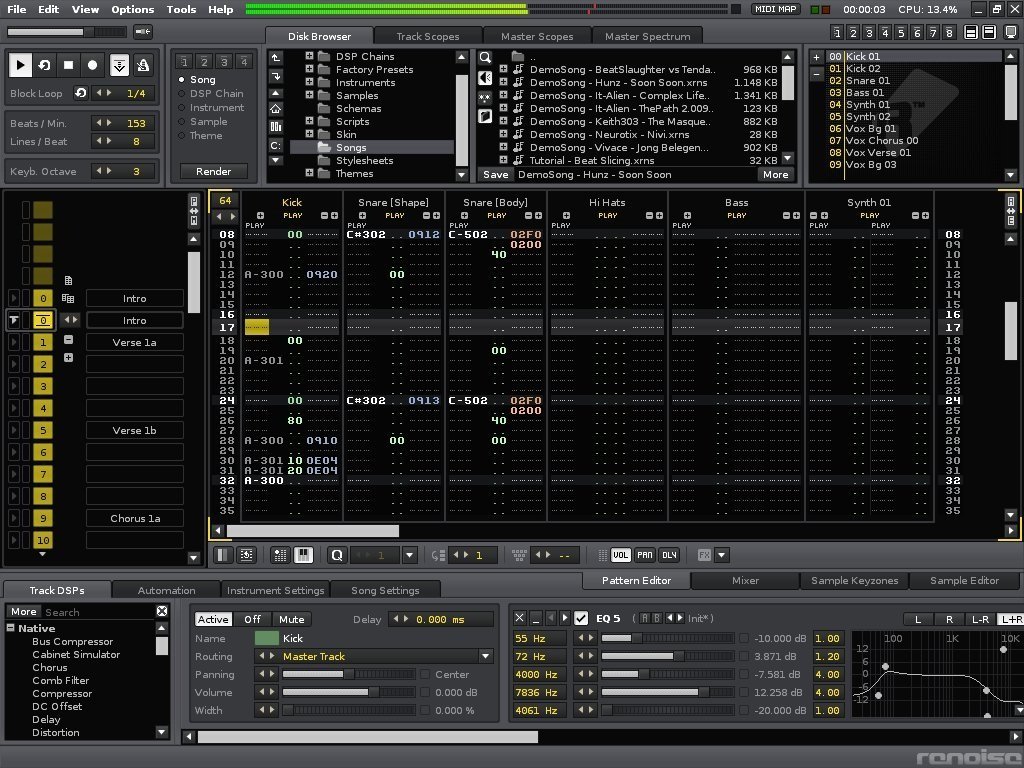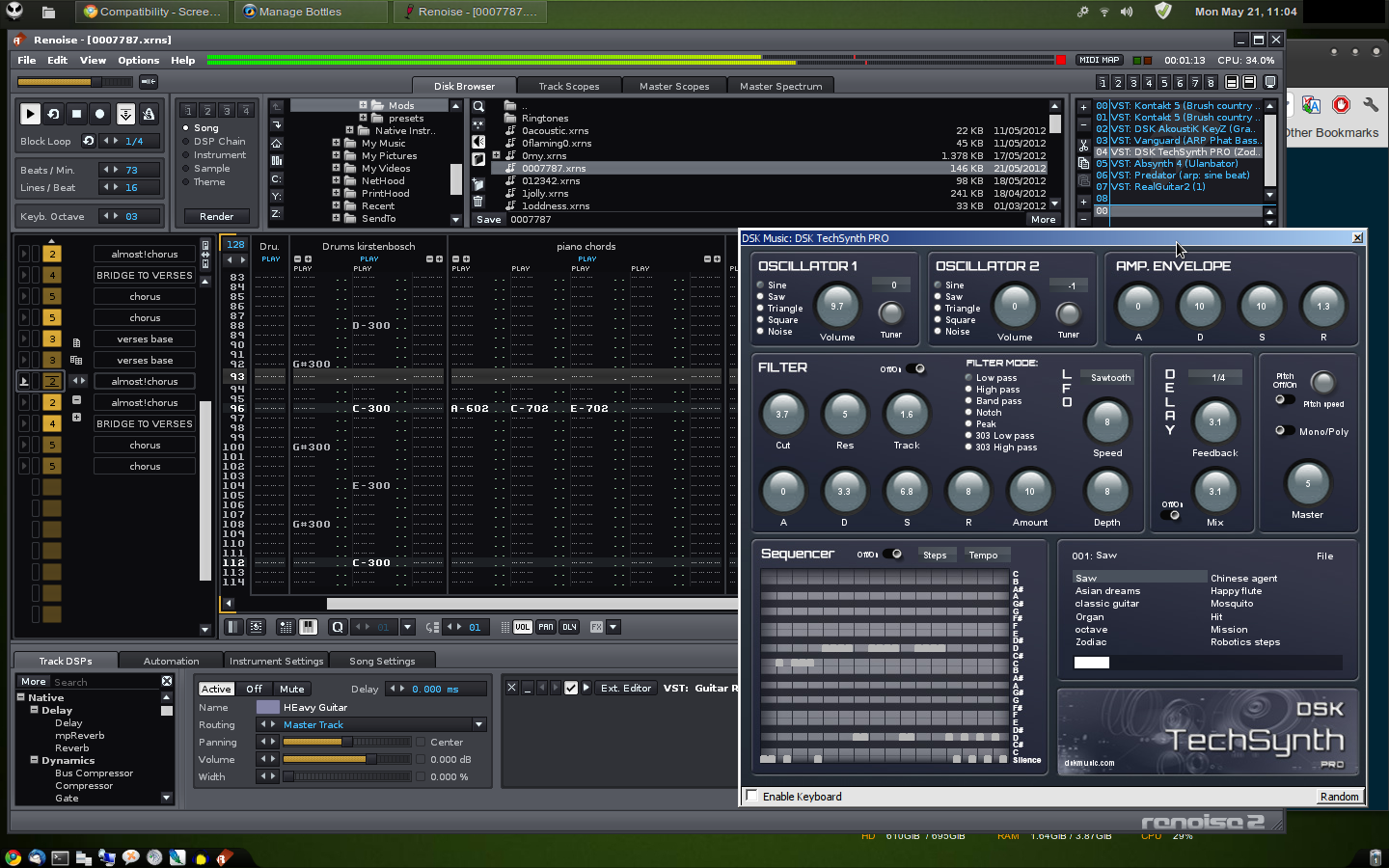

Right now I’m testing it with everything on though, since I want to make sure it will be functional even with all its most expensive settings enabled. I have a setup in the synth where unused modules can be turned on and off to save resources, but I haven’t worked the channel reading into that yet. I have ksmps set to 32 much larger than that and I start running into trouble with input lag, and sound quality suffers a bit in a few places. Type sudo sh (with a space after it) Drag the install.sh file into the terminal window and it will auto-complete the line. LMMS LMMS comes bundled with a variety of synths, all of which support microtuning by default. Open the terminal (Linux/OSX equivalent to Windows Command Line) it’s under applications > accessories > terminal. It lets you compose, edit and record production-quality audio using a music tracker-based approach. It also supports plugins so you can get at those microtones that way.
LINUX RENOISE INSTALL
To reduce latency on Linux you must: - Install a real-time kernel (designed expressly to.
LINUX RENOISE UPDATE
I’ll take a closer look at Reaper and see if it would work well enough for the project I’m taking on right now. Renoise is a tracker style DAW that runs natively on Linux and can be microtuned using the SCL to XRNI tool. Re: Renoise 3.4 update - Raspberry Pi & M1 support. Renoise in Windows performs similarly to Live. Renoise also looks more like it is focused on sample editing and looping rather than being a multi-track. I tried out Reaper in Windows and Cabbage performance there is better than in any other DAW I’ve tried so far, comparable to the standalone. crop of all of these is Ardour, also open source. Several weeks ago a first version of Renoise for Linux appeared. It supports instrument plugins, effects, MIDI input and output, synchronization capabilities, and parameter automation. It leaves a lot to be desired in other ways but those two aspects of it make it really nice to work with for me. Author: JT Smith Renoise is a digital audio workstation (DAW) based on the design principles of the module tracker.

It is too bad, though, just because its piano roll and automation system are really nice and have some features I haven’t seen in other sequencers. That’s interesting-I guess it doesn’t surprise me, exactly, since FL Studio also seems kind of unstable to me.
LINUX RENOISE .DLL
dll to yabridge's watch folderĥ) yabridgectl sync / generate.

LINUX RENOISE DOWNLOAD
Yabridge takes just a couple tweaks to prevent the DAWs I use (Reaper and Renoise) from crashing when changing presets, but I'm told that is an issue with those DAWs.ġ) Install yabridge per the readme instructions on GitHubĢ) Download gdiplus with winetricks (Serum needs this to render the GUI)ģ) If using Reaper/Renoise, add 3-4 lines to a config file (this prevents the DAW from crashing when changing presets)Ĥ) Copy or symlink the Serum. Linux: 32 & 64bit ARM builds (ARMhf & ARM64), optimized for Raspberry PI 3/4.

It's under active development right now, meaning features are being added and bugs are being squashed. Tracker DAW and sister plugin Redux updated 20/03/22 Renoise 3.4 Released. It's similar to LinVST or Airwave but almost hassle-free and (imo) much simpler to set up than those. Bridged plugins are denoted with an arrow icon. A special bridging technology still makes it possible to load 32-bit plugins, at the cost of some additional processing power. So far, Serum works flawlessly for me using this program called yabridge (Yet Another Bridge): Renoise runs on the following processors and operating systems: General information From version 3.1, Renoise only is available as 64-bit version. This might be of interest to developers or anyone else looking to run Serum on Linux.


 0 kommentar(er)
0 kommentar(er)
